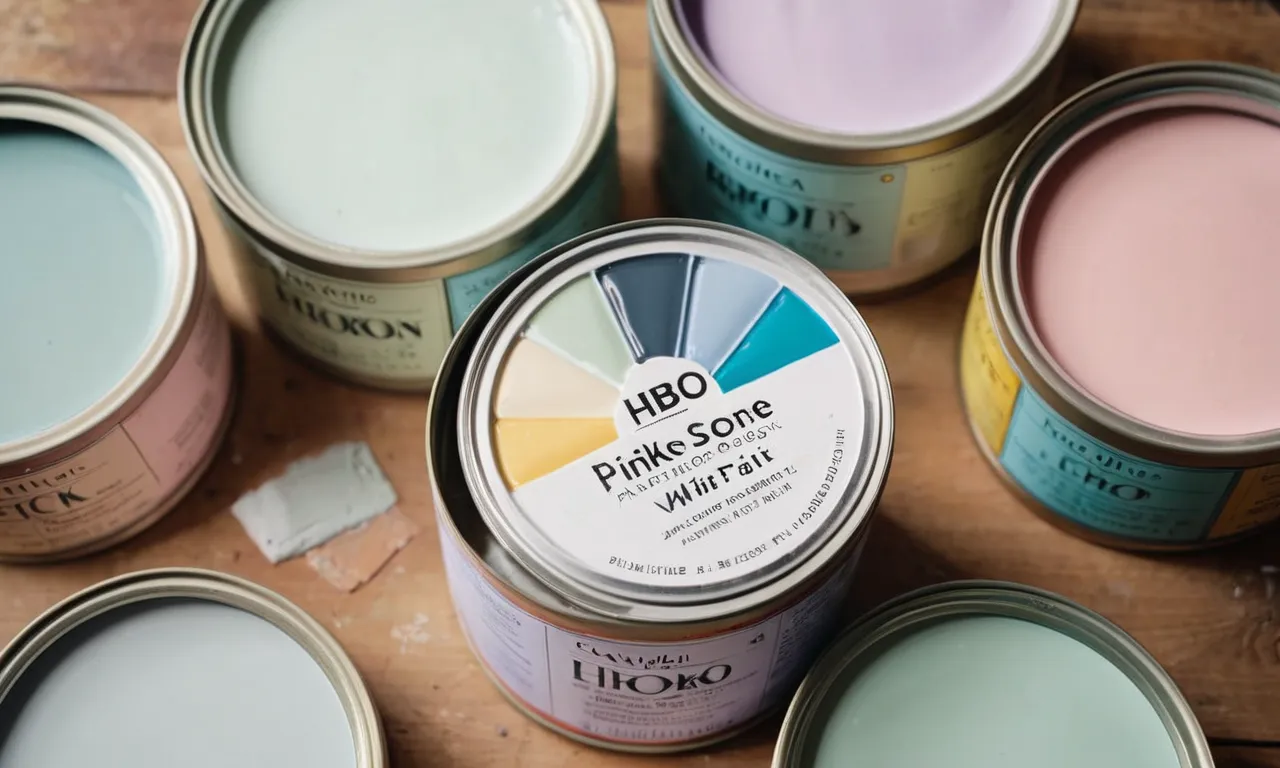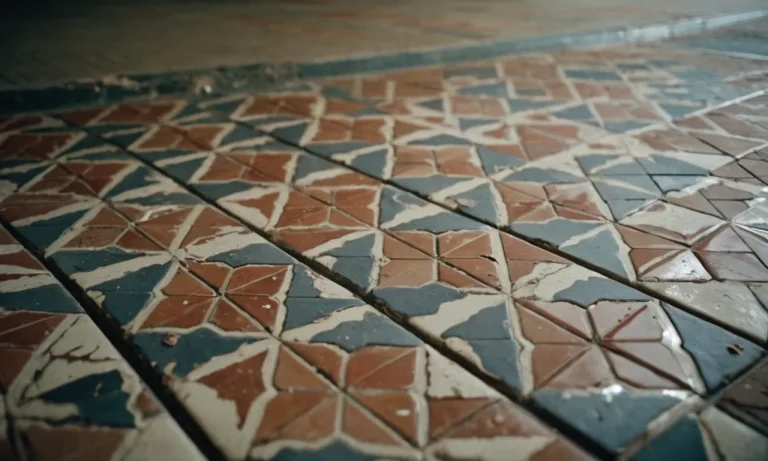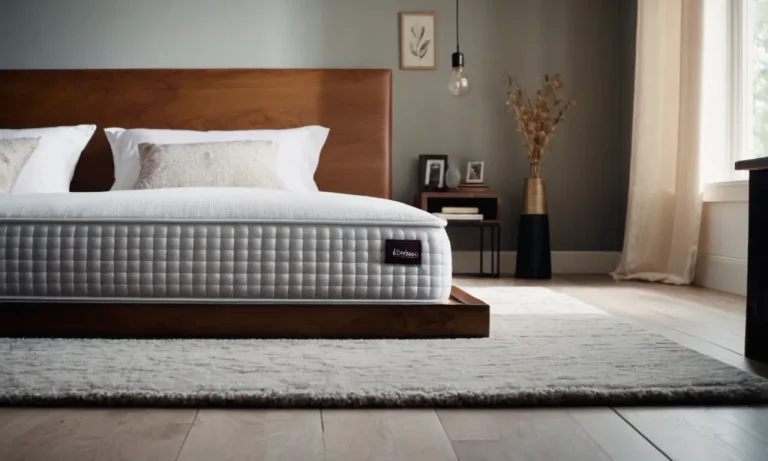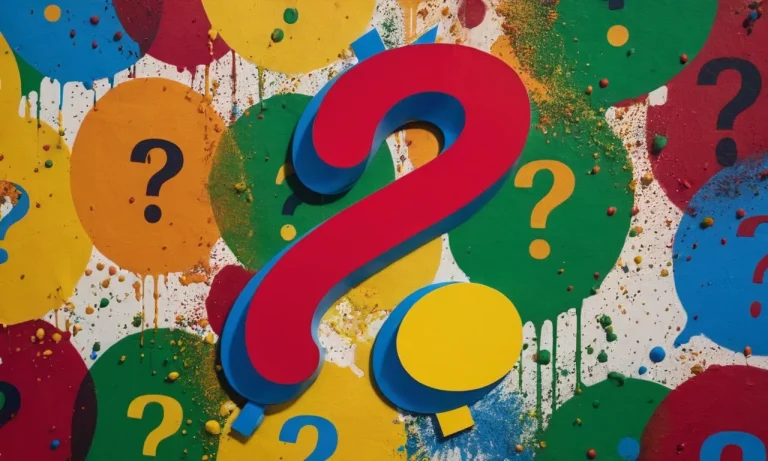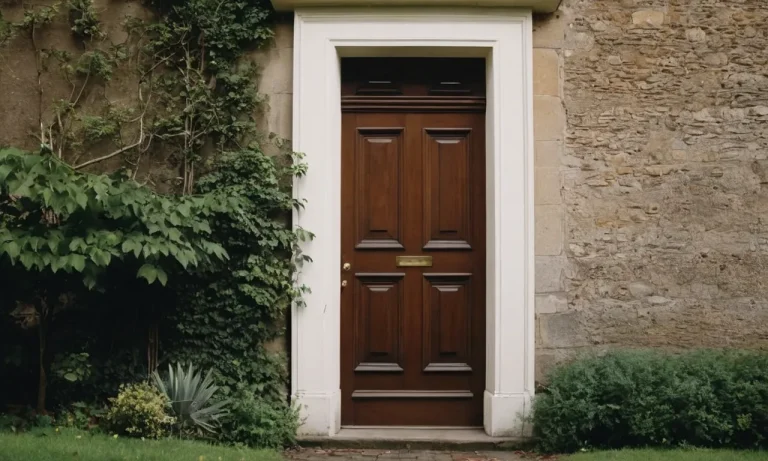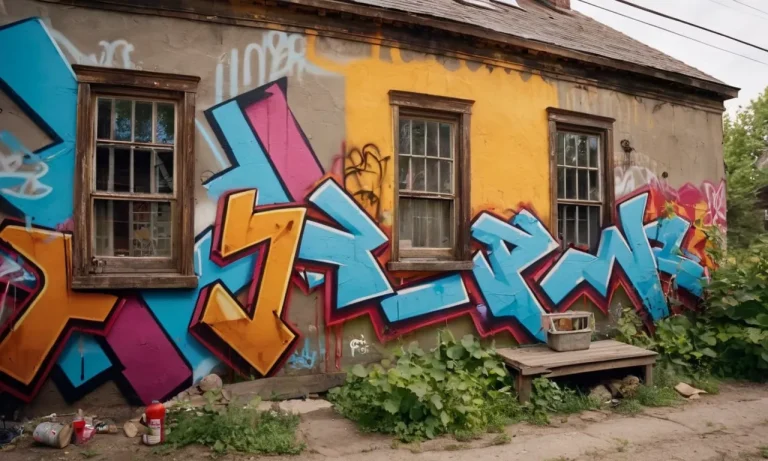What Is White Wash Paint? A Comprehensive Guide
If you’ve ever walked through a rustic farmhouse or flipped through the pages of a home decor magazine, you’ve likely seen the popular white washed wood look. White wash paint creates a weathered, vintage appearance on wood, brick, concrete and more.
But what exactly is white wash paint and how do you use it?
White wash paint is a watered down paint mixture that lets some of the underlying surface show through. It gives surfaces a faded, timeworn look. The white wash technique has been used for centuries, originally as a way to protect and brighten buildings.
These days it’s a popular decor style for creating a relaxed, aged aesthetic in homes.
What Is White Wash Paint?
White wash paint is a unique type of paint that has been used for centuries to give surfaces a distinct appearance. It is known for its ability to create a weathered, vintage look, which has made it popular in both interior and exterior design.
White wash paint is often used on materials such as wood, brick, and stone, and can be applied to walls, furniture, and even floors.
A Thinned Down Paint Mixture
White wash paint is essentially a thinned down mixture of paint and water. Traditional white wash paint is made by combining lime, water, and pigment. The lime acts as a binder, helping the paint adhere to the surface, while the water thins out the mixture for easier application.
The pigments used can vary, but white is the most common color used, giving the paint its signature look.
One of the great advantages of white wash paint is its versatility. The paint can be thinned or thickened depending on the desired effect, allowing for a range of finishes. It can be applied in a thin, translucent layer to allow the underlying surface to show through, or it can be applied more heavily for a solid, opaque look.
Shows Underlying Surface
One of the defining characteristics of white wash paint is its ability to show the underlying surface. When applied to wood, for example, the paint allows the natural grain and texture to shine through, creating a beautiful, rustic look.
This effect is particularly desirable when aiming for a vintage or farmhouse style.
White wash paint can also be used to soften the appearance of surfaces that may have imperfections or blemishes. By allowing some of the underlying surface to show through, the paint can help to create a more forgiving and organic look.
Creates Weathered, Vintage Look
The weathered, vintage look created by white wash paint is highly sought after in interior design. It adds character and charm to any space, creating a sense of history and nostalgia. Whether used on furniture, walls, or other surfaces, white wash paint can instantly transform the look and feel of a room.
White wash paint is particularly popular in coastal or beach-themed interiors, as it evokes a sense of the sea and weathered beach houses. It can also be used to give a fresh, airy feel to modern or minimalist spaces, providing a touch of warmth and texture.
Benefits of Using White Wash Paint
White wash paint offers several benefits that make it a popular choice among homeowners and DIY enthusiasts. Whether you are looking to refresh the look of your walls, furniture, or any other surface, white wash paint can be a fantastic option.
Here are some of the key advantages of using white wash paint:
Versatile Look
One of the main benefits of white wash paint is its ability to create a versatile look that suits various design styles. Whether you have a modern, rustic, or coastal-themed interior, white wash paint can enhance the overall aesthetic appeal.
The translucent nature of white wash paint allows the underlying texture and character of the surface to show through, giving it a unique and charming appearance.
According to a study conducted by Interior Decorating, white wash paint has been found to make spaces appear brighter and more spacious, making it an excellent choice for smaller rooms or areas with limited natural light.
The light and airy feel created by white wash paint can instantly transform a dull or cramped space into an inviting and open environment.
Easy DIY Project
Another advantage of using white wash paint is its simplicity as a DIY project. Unlike other painting techniques that require extensive preparation and multiple coats, white wash paint can be applied with ease.
It is a forgiving paint option that allows you to achieve a desirable finish even if you are not an experienced painter.
With white wash paint, you have the freedom to experiment and create different effects. For example, you can dilute the paint with water to achieve a more transparent look or apply it more heavily for a solid white finish.
The versatility of white wash paint makes it a fun and creative project that can be enjoyed by individuals of all skill levels.
Low Commitment
White wash paint offers a low commitment option for those who like to change up their interior decor frequently. Unlike traditional paint that can be challenging to remove or cover up, white wash paint can be easily modified or removed if desired.
This flexibility allows you to update your space without the hassle and expense of repainting or replacing furniture.
In addition, white wash paint is an eco-friendly choice as it typically uses natural ingredients such as lime or chalk. This makes it a healthier alternative to conventional paints that may contain harmful chemicals.
By opting for white wash paint, you are not only enhancing the aesthetics of your space but also making a sustainable choice for the environment.
How to White Wash Wood
Supplies Needed
Before starting the white washing process, gather all the necessary supplies. You will need:
- A paintbrush or a rag
- White paint (latex or acrylic)
- Water
- Sandpaper
- Drop cloth or newspaper
Having these supplies ready will make the process smoother and more efficient.
Prepping the Wood
Before applying the whitewash, it is important to prepare the wood surface. Start by sanding the wood to remove any rough edges or imperfections. This will ensure a smooth and even finish. Once the sanding is complete, wipe down the wood with a damp cloth to remove any dust or debris.
Making the Whitewash
The next step is to prepare the whitewash mixture. In a container, mix equal parts of white paint and water. Stir the mixture well until it reaches a consistency similar to that of milk. If you prefer a more opaque finish, you can add more paint to the mixture.
Experiment with different ratios until you achieve the desired effect.
Applying the Whitewash
Now it’s time to apply the whitewash to the wood. Dip your paintbrush or rag into the whitewash mixture and start applying it in long, even strokes. Make sure to work in the direction of the wood grain for a more natural look.
If you want a more subtle effect, you can wipe off excess whitewash with a clean cloth as you go. Allow the first coat to dry completely before deciding if you want to apply a second coat for a more opaque finish.
Sealing the Finish
Once the whitewashing is complete and the paint has dried, it is important to seal the finish to protect it from wear and tear. You can use a clear sealant or varnish to protect the whitewash and enhance its durability.
Apply the sealant according to the manufacturer’s instructions and allow it to dry completely before using or moving the piece of wood.
Remember, practice makes perfect when it comes to white washing wood. Don’t be afraid to experiment and adjust the whitewash mixture to achieve the desired effect. Enjoy the process and have fun transforming your wood surfaces with this timeless painting technique!
Whitewashing Brick
Whitewashing brick is a popular technique used to give brick surfaces a fresh, clean, and rustic look. It involves applying a thin layer of white paint or a mixture called whitewash to the brick surface.
This technique has been used for centuries and is still widely used today to add character and charm to both interior and exterior brick walls.
Cleaning the Brick
Before applying whitewash to brick, it is important to clean the surface thoroughly. This will ensure that the whitewash adheres properly and lasts longer. You can start by removing any loose dirt or debris using a stiff brush or broom.
For stubborn stains or dirt, a mixture of warm water and mild soap can be used. Gently scrub the brick surface and rinse with clean water. Allow the surface to dry completely before moving on to the next step.
Making Whitewash for Brick
Making whitewash for brick is a simple process that requires only a few basic ingredients. Traditionally, whitewash is made by mixing lime, water, and salt. Lime acts as a binder and gives the whitewash its characteristic white color, while salt helps to prevent the growth of mold and mildew.
To make the whitewash, mix one part lime with three parts water in a bucket. Add a small amount of salt and stir well until the mixture reaches a smooth and consistent texture.
Applying Whitewash to Brick
Applying whitewash to brick can be done using a brush or a roller. Start by wetting the brick surface with water to ensure better adhesion of the whitewash. Then, dip the brush or roller into the whitewash mixture and apply it evenly to the brick surface.
Work in small sections to prevent the whitewash from drying too quickly. Apply multiple coats if desired, allowing each coat to dry before applying the next. Remember to follow the manufacturer’s instructions if using a commercial whitewash product.
Sealing the Brick
After applying the whitewash to the brick, it is recommended to seal the surface to protect it and enhance its durability. There are various sealants available in the market specifically designed for brick surfaces.
These sealants help to repel water, prevent staining, and provide a protective barrier against the elements. Follow the manufacturer’s instructions to properly seal the whitewashed brick. Regular maintenance, such as cleaning and resealing, will help to ensure that the whitewash lasts for a long time and maintains its beautiful appearance.
For more information on whitewashing brick and other home improvement techniques, you can visit www.bobvila.com or www.thisoldhouse.com.
Whitewashing Concrete
Cleaning Concrete
Before applying whitewash to concrete, it is important to ensure that the surface is clean and free from any dirt or debris. This can be done by sweeping or power washing the concrete to remove any loose particles. For stubborn stains or dirt, a mild detergent or concrete cleaner can be used.
It is important to thoroughly rinse the concrete surface after cleaning to remove any residue.
Mixing Concrete Whitewash
To create the whitewash solution for concrete, you will need hydrated lime, water, and optional additives such as salt or pigment. In a bucket or container, mix hydrated lime with water according to the manufacturer’s instructions. The consistency of the whitewash should be similar to that of paint.
If desired, you can add salt to the mixture to improve the whitewash’s durability. Additionally, pigment can be added to achieve a specific color if desired.
Applying Whitewash to Concrete
Once the whitewash mixture is ready, it can be applied to the concrete surface using a brush or roller. Start by wetting the concrete with water to ensure better adhesion. Then, dip the brush or roller into the whitewash mixture and apply it evenly to the concrete surface.
Work in small sections to ensure uniform coverage. It may be necessary to apply multiple coats depending on the desired effect and the porosity of the concrete. Allow each coat to dry before applying the next one.
Sealing Concrete
To protect the whitewashed concrete surface and enhance its durability, it is recommended to apply a sealer once the whitewash has fully dried. A concrete sealer will help to prevent stains, water damage, and fading.
There are various types of sealers available, including penetrating sealers and film-forming sealers. It is important to choose a sealer that is compatible with the whitewash and suitable for outdoor use.
Follow the manufacturer’s instructions for applying the sealer and allow it to cure fully before exposing the concrete to heavy traffic or harsh weather conditions.
For more information on whitewashing concrete, you can visit the following websites:
Whitewash Paint Color Options
When it comes to whitewash paint, there are several color options available to suit different preferences and design styles. Whether you’re looking for a bright and fresh look or a more vintage and aged appearance, there’s a whitewash paint color that can meet your needs.
Bright White
Bright white is a popular choice for whitewash paint color. This color option provides a clean and crisp look, making it perfect for modern and contemporary designs. It can make a room feel more spacious and bright, creating a refreshing and inviting atmosphere.
Antique White
For those who prefer a more vintage and rustic look, antique white is an excellent option. This color has a slightly warmer tone compared to bright white, giving it a timeless and aged appearance. It can add character and charm to any space, making it a popular choice for farmhouse and shabby chic styles.
Off-White
If you’re looking for a subtle and versatile whitewash paint color, consider off-white. This color option has a hint of beige or gray undertones, providing a soft and neutral look. Off-white can complement a variety of design styles, from traditional to coastal, making it a great choice for those who want a more understated and flexible option.
Gray
Gray is a trendy and sophisticated color choice for whitewash paint. It offers a modern and sleek look, creating a stylish and contemporary atmosphere. Gray whitewash can add depth and dimension to a space, making it a popular option for minimalist and industrial designs.
Black
While not as commonly used as other whitewash paint colors, black can create a dramatic and bold statement. Black whitewash can add a touch of elegance and edginess to a room, making it a unique choice for those who want to break away from traditional color options.
It can be used to create a striking accent wall or to add contrast to a space.
When choosing a whitewash paint color, it’s important to consider the overall style and mood you want to achieve in your space. Experimenting with different color options can help you find the perfect shade that will enhance your design and create the desired aesthetic.
Whitewash vs. Pickling
Whitewash Overview
Whitewash paint is a traditional type of paint that has been used for centuries to create a unique and rustic look. It is made by mixing lime or chalk with water and applying it to surfaces such as wood, brick, or stone.
Whitewashing not only adds a beautiful, aged effect to the surface but also helps to protect it from insects and weathering.
The process of whitewashing involves applying multiple thin coats of the paint mixture, allowing each coat to dry before applying the next. This allows the paint to penetrate into the surface and create a durable finish.
Whitewash paint is known for its ability to create a soft, matte appearance that lets the natural texture and grain of the surface show through.
If you’re looking to achieve a charming, vintage look for your home or furniture, whitewashing can be a great option. It is often used in farmhouse-style or coastal-themed interiors, as well as on exteriors to create a weathered look.
Pickling Overview
Pickling, on the other hand, is a technique used to create a light, washed-out appearance on wood surfaces. It involves applying a diluted white paint or stain onto the wood and then wiping off the excess, leaving behind a subtle white color.
Pickling is typically done on hardwoods, such as oak or ash, to highlight the grain and create a bleached effect.
The process of pickling involves preparing the wood surface by sanding it and then applying a water-based pickling stain. After allowing it to penetrate the wood for a few minutes, the excess stain is wiped off with a clean cloth.
This technique allows the wood’s natural grain to shine through while giving it a soft, white-washed look.
Pickling is commonly used in contemporary or Scandinavian-style interiors, as well as in beach-themed or shabby-chic designs. It adds a touch of brightness and warmth to the space while still maintaining the natural beauty of the wood.
Key Differences
While both whitewashing and pickling involve creating a light, white-washed appearance on surfaces, there are some key differences between the two techniques:
| Whitewash | Pickling |
|---|---|
| Uses lime or chalk mixed with water | Uses a diluted white paint or stain |
| Creates a soft, matte finish | Allows the wood’s natural grain to shine through |
| Can be used on various surfaces | Primarily used on hardwoods |
| Protects surfaces from insects and weathering | Enhances the wood’s natural beauty |
Sources:
– https://www.thespruce.com/whitewash-your-furniture-4520733
– https://www.thespruce.com/pickling-wood-4589346
Whitewash vs. Limewash
Whitewash Definition
Whitewash paint is a type of paint that is made by mixing slaked lime, water, and other additives. It is often used as a decorative or protective coating for interior and exterior surfaces. Whitewash has been used for centuries and is known for its ability to give surfaces a rustic and weathered look.
It is commonly used on walls, fences, and barns.
Limewash Definition
Limewash is similar to whitewash in that it is made from slaked lime and water, but it differs in terms of its composition and application. Limewash is made by mixing slaked lime with water and adding pigments to create different colors.
It is commonly used as a coating for masonry surfaces, such as brick and stone. Limewash is known for its ability to create a soft, matte finish that allows the texture of the underlying surface to show through.
Comparison of Uses and Results
While both whitewash and limewash are made from slaked lime and water, they are used for different purposes and produce different results.
- Whitewash: Whitewash is often used for its decorative qualities. It can give surfaces a bright, white appearance and a rustic, aged look. It is commonly used on wooden surfaces, such as fences and furniture. Whitewash is also used in agricultural settings to protect and sanitize surfaces.
- Limewash: Limewash is primarily used as a protective coating for masonry surfaces. It can help to protect against moisture and weathering. Limewash is also valued for its ability to create a breathable finish that allows moisture to escape from the underlying surface.
It is commonly used on historic buildings to preserve their original appearance.
When it comes to application, whitewash is typically applied in thin coats, while limewash can be applied in multiple coats to create a more opaque finish. Both types of paint can be easily applied with a brush or sprayer.
It’s important to note that while whitewash and limewash are similar in composition, they have different properties and applications. It’s always best to consult with a professional or refer to the manufacturer’s instructions when choosing between the two.
Conclusion
With its worn, vintage vibe, whitewash paint can give your surfaces a cozy, homey look. It’s a flexible decorative technique that works on many materials like wood, brick and concrete. While creating a whitewashed finish takes a bit of work, the charming weathered results are well worth it.
Armed with the right supplies and techniques, you can easily white wash surfaces throughout your home.
Whitewash paint offers an easy weekend project for DIYers looking to refresh their space with some farmhouse flair. So grab your paintbrush and try your hand at whitewashing your next decor project!

